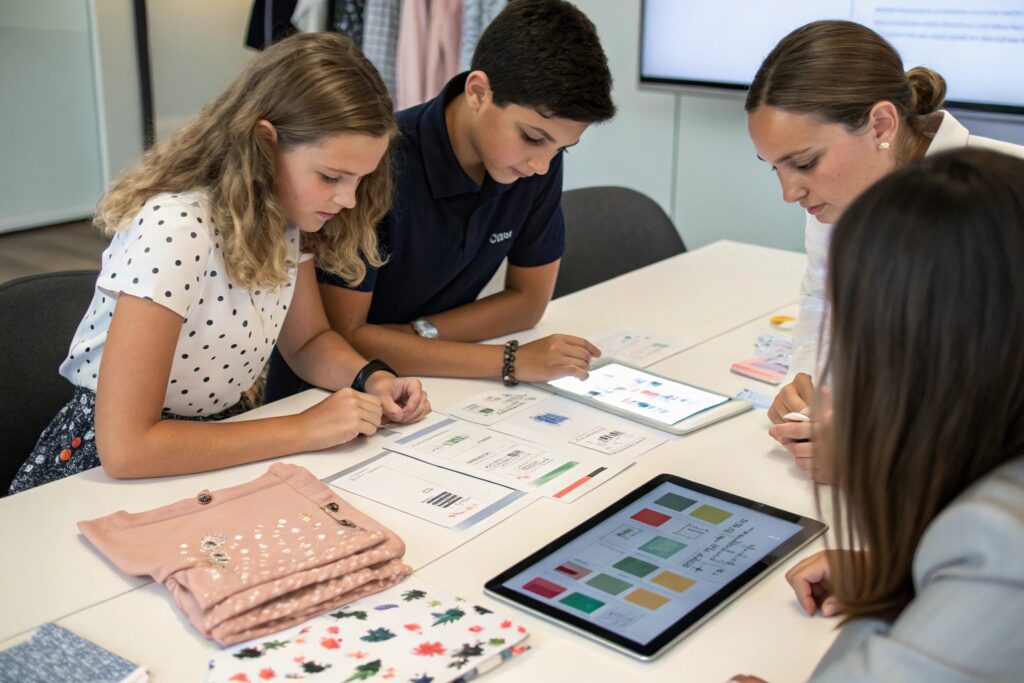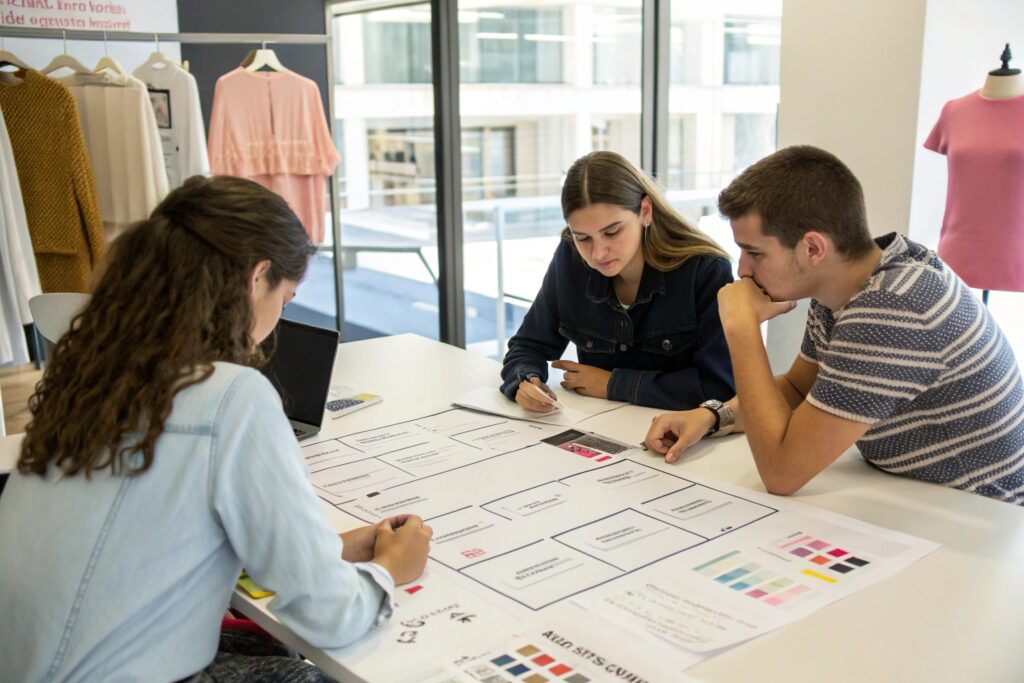Capsule collections move fast—but placing the order is where things get real. Get it wrong, and you risk excess stock or stockouts. Get it right, and you unlock fast turnover, lean growth, and strong customer loyalty.
Before placing capsule orders, brands must consider timeline, MOQ, unit economics, production flexibility, and realistic demand projections to avoid costly mistakes.
If you’re preparing your first or next capsule order, here’s what you need to know to get the quantity, timing, and production plan just right.
Key Factors to Consider Before Placing Capsule Orders
Capsule collections are different from regular production runs. You need a tailored approach.
Before placing a capsule order, assess your launch calendar, audience size, SKU mix, forecast accuracy, fabric sourcing options, and sampling timeline.

What planning elements should be locked in before you confirm your PO?
At Fumao Clothing, we help brands work through these questions before they place an order:
- Launch Date: Are you working backward from a fixed event or season?
- Sample Approval: Have you tested and approved your final version?
- Audience Size: Do you have preorder or email engagement to estimate sales?
- Size Split: Are you using past data to plan size ratios?
- Fabric Choice: Is your fabric in stock or custom dyed?
- Shipping Plan: Do you need air freight, or can you afford sea time?
Without answering these, your order might be rushed, overpriced, or out of sync with your market.
Why is early alignment with your factory so important?
Your manufacturer should help you plan—not just produce. At Fumao Clothing, we walk through your full capsule lifecycle before you order.
That means your production aligns with your marketing—not the other way around. And if your preorder spikes, we already have a restock path mapped out.
How to Calculate the Right Quantity for Capsule Units
Capsule orders are about balance: not too much, not too little. But how do you know the “just right” number?
You can calculate capsule quantities by estimating conversion rates from your audience size, factoring in sales channel capacity, and using staged inventory planning.

What’s a practical way to estimate capsule order quantity?
Here’s a basic formula we recommend:
Estimated Order Quantity = (Audience Size × Conversion Rate %) × Average Units per Order
For example:
- Email List = 3,000
- Expected Conversion = 3%
- Avg. Units/Order = 2
That gives you:
3,000 × 0.03 × 2 = 180 units
So your first batch might be around 150–200 units.
If you’re using paid ads or influencer drops, adjust accordingly. Add a buffer for each channel’s expected reach and your brand’s past performance.
How do you split quantities across SKUs and sizes?
Capsule brands often launch 3–5 core styles. Keep SKU count tight. Then use standard kidswear ratios for size splits (depending on age category):
| Size | % of Total |
|---|---|
| 0–3M | 15% |
| 3–6M | 25% |
| 6–12M | 25% |
| 12–18M | 20% |
| 18–24M | 15% |
Adjust based on past sales or feedback. At Fumao Clothing, we also track size sell-through on every order—helping you refine your next capsule drop.
Understanding MOQ and Flexibility for Capsule Collections
MOQ is one of the biggest barriers to capsule entry. But it doesn’t have to be.
Understanding MOQ means knowing your total unit count, per-SKU flexibility, shared material strategy, and how to negotiate structure with a capsule-ready supplier.

What does “MOQ” really mean for capsule collections?
MOQ = Minimum Order Quantity. But at Fumao Clothing, we break that down differently:
- Total MOQ – Usually 300–500 pcs across the capsule
- Per Style MOQ – Around 80–100 pcs per style
- Per Color MOQ – 50–100 pcs depending on fabric
- Per Size MOQ – Often as low as 15 pcs per size if total adds up
We’re built for flexibility. As long as your combined order hits 300+, we can customize trims, labels, and packaging—even across multiple styles.
How can brands lower MOQ without sacrificing quality?
Use shared fabrics. Limit colorways. Repeat trims across styles. Avoid lined garments or complicated embroidery.
We also offer “MOQ Boost” options—where you use our in-stock fabrics to skip sourcing delays and lower fabric minimums.
Capsule brands that stick to a clear theme (e.g., all-ribbed knits in earth tones) reduce costs and streamline production. It’s smart design, not compromise.
Common Mistakes Brands Make with Capsule Production
Capsules are powerful—but only if executed right. Many first-timers make the same avoidable errors.
Common mistakes include over-ordering, under-testing, poor communication, ignoring shipping timelines, and trying to launch too many styles at once.

What are the most common errors and how can you avoid them?
| Mistake | Fix |
|---|---|
| Ordering too much with no data | Start small, scale only what sells |
| Skipping sample revisions | Always revise at least once before bulk |
| Launching 10+ SKUs in one drop | Focus on 3–5 core styles max |
| Choosing unique fabric for each piece | Consolidate fabric use |
| Forgetting to align launch + shipping dates | Build your calendar backward from go-live |
At Fumao Clothing, we help brands avoid all of these with planning tools, weekly check-ins, and fabric reuse strategies.
Why is capsule production not “easier” just because it’s smaller?
Smaller batches require more precision. You have less room for error, and every piece matters. The fewer the styles, the higher the bar for quality, styling, and branding.
Capsules simplify inventory, but increase focus on execution. That’s why we build detailed processes—from sample tracking to flexible shipping—designed for capsule success.
Conclusion
Ordering capsule units isn’t about taking risks—it’s about reducing them. With the right data, a flexible partner, and a clear plan, your capsule order becomes your most efficient and profitable drop yet.










